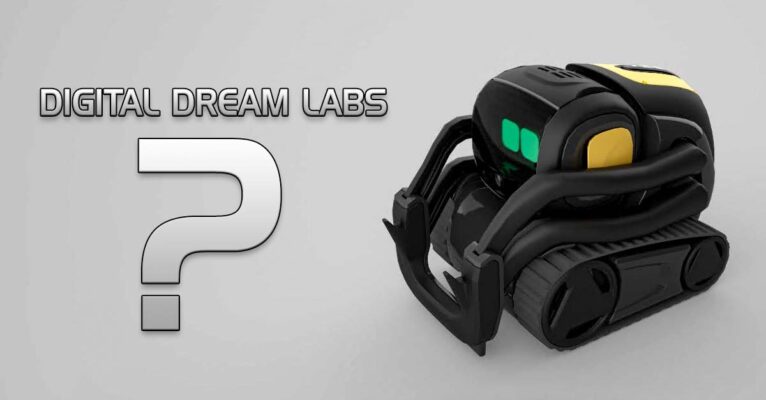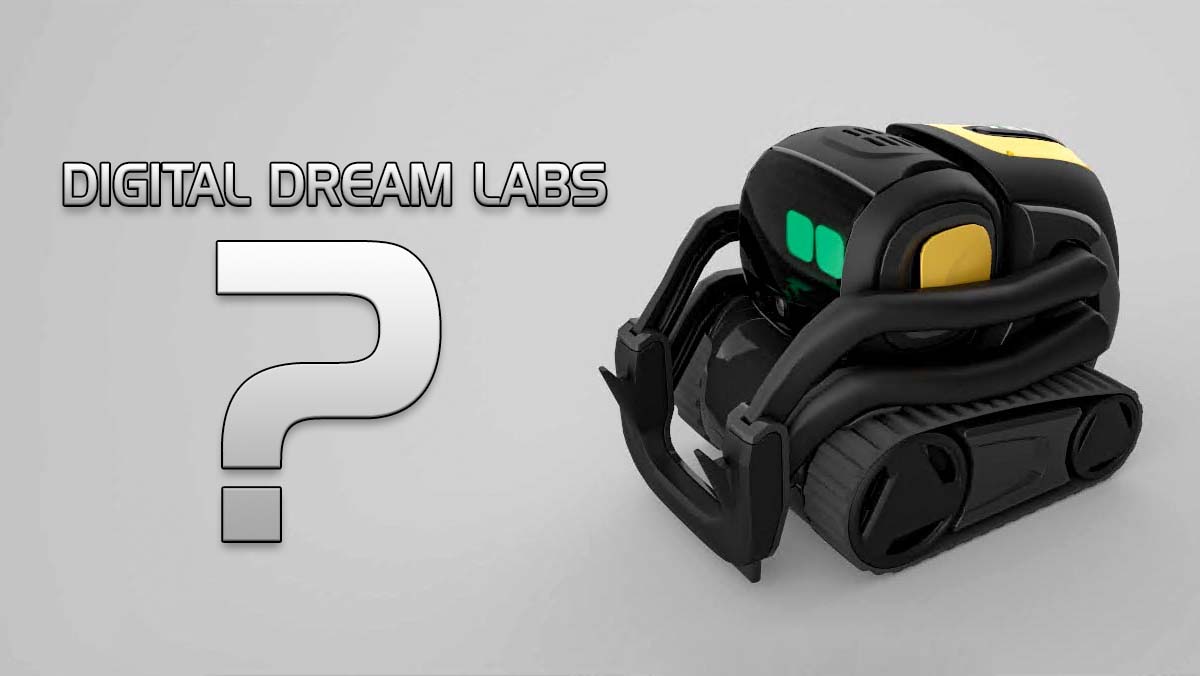Open Source
Digital Dream Labs promised something called OSKR, that is an acronym for Open Source Kit for Robots, in their Kickstarter campaign that closed in March 2020 and raked in half a million Dollars. They promised to open source the firmware of Vector the robot, so everyone would be able to create “open Vector builds” or new functions for Vector.
As we all know after over two and a half years nearly nothing of that promise was met (only thing we got was a partially opened robot and some server code, there still is no complete robot code, no toolchain and no documentation); since it was financed via Kickstarter that campaign can be called a scam.
As I said: small parts were published on Github. The publishing of Chipper, the server Vector runs off, at least enabled Wire to create Wire-Pod, an alternative to the buggy and feature-incomplete official Escape Pod.
But: Let’s talk about Open Source. First a definition taken from Wikipedia:
Open-source software (OSS) is computer software that is released under a license in which the copyright holder grants users the rights to use, study, change, and distribute the software and its source code to anyone and for any purpose. (Source)
But if twe have a look into the license that Digital Dream Labs provided with the code on Github, we immediately see that they did not use any of the Open Source licenses usually attached to Open Source projects, for example MIT, GPL, LGPL, Apache or others, like it is normal with OS projects.
Instead DDL let their lawyers cook up their own license and if we have a look into that it immediately becomes clear, that this is no open source license. See the following excerpt (original on Github):
2. Terms of Use
All rights, title and interests of and in the Source code, Object code, sound objects, artwork, scripts and other Assets contained within this repository for the Vector Robot, together with all associated intellectual property rights, including without limitation copyright, are held by DDL, and all rights are reserved by DDL. Under the terms of this License, any person who is in legal possession of, or holds interest in, a Vector Robot (or other product sold, maintained, deprecated, or otherwise subject to the applicable copyrights, patents, trademarks, trade dress or other legal protections and intellectual property rights of the Licensor) (the “Covered Products”), is granted, subject to the terms of this License, a non-exclusive, personal License to use the provided Assets or Derivative Works thereof, including, without limitation, Source code, Object code, artwork, sound Objects, and other Assets, for that person’s own educational or entertainment purposes, and also for commercial purposes provided that the Assets and Derivative Works are used with the Covered Products and with no other products or other purpose. Permitted use of the Assets under this License includes public display of the Assets in commercial or educational settings provided that such display is associated with the Covered Products.
Permitted use of the Assets under this License does not include commercial activity involving the sale of unaltered Assets, or the use of Assets or Derivative Works with products that are not Covered Products, and any sale or use is prohibited. This License is revoked immediately upon violation by You of any of the terms and restrictions outlined in this License.3. Derivative Works
Derivative Works, in whole or in part, and in Source or Object form, may be redistributed and commercially sold, provided that such Derivative Works are designed for use with, or to accompany, the Covered Products and otherwise are subject to the terms and restrictions on Licensed use of the Assets.4. Contributions
Any Derivative Work, modification, or improvement to the Assets that is knowingly submitted by You to the Licensor for inclusion in the Assets will be considered to then be an Asset and will be subject to the terms of this License.
The emphasis in section 2 is by me. We can see immediately that this is not an open source license at all, since DDL tries to keep all rights, let’s quote the relevant parts again:
All rights, title and interests of and in the Source code, Object code, sound objects, artwork, scripts and other Assets contained within this repository for the Vector Robot, together with all associated intellectual property rights, including without limitation copyright, are held by DDL, and all rights are reserved by DDL.
That is not open source, not by the definition of open source and not by the common ethics of the open source community. Let me again quote the relevant part of the OS definition from Wikipedia:
[…] that is released under a license in which the copyright holder grants users the rights to use, study, change, and distribute the software and its source code to anyone and for any purpose
Emphasis by me.
So Digital Dream Labs tries to create the illusion they are open sourcing Vector and the server software when actually they are doing something quite different. The code may be open, but the license prohibits most use cases.
Example: If you wanted to implement a Chipper fork to run another robot off it, it would be forbidden by the license.
So don’t buy their PR babble when they are talking about this being open source. It is not. Neither will be the robot sources if they will ever release them, which I do not believe any more, since they are continuously cooking up new excuses why they cannot release them. Imagine if the “Open Vector Builds” promised in the Kickstarter were actually possible and community coders would release Vector firmware being able to do way more than DDL was able to cook up in the last three years after they bought the Anki assets (almost nothing)? They would look even worse than they already do.
My guess is they used the term “Open Source” in their Kickstarter Campaign without knowing what it really means and without thinking about the consequences of Open Source. Later on they recognized their errors and now try to silently remedy that by imposing this highly restricting software license, that is not open source at all.
DDL obviously has no intentions to open source anything.
Now we will come to the second point:
Escape Pod
Where is Escape Pod? Yes, I know, a second version is around for months, that broke extension engine (documentation on how to fix that was promised but is still missing months later, another clear indication they do not want third parties to create anything for Vector) and still misses basic functionality that was promised in the Kickstarter campaign, like weather and knowledge base.
But: All people that preordered a Vector 2.0 were promised a free Escape Pod license (from what I heard that even can be read on the Vector 2.0 box). Now, over one and a half years after the promised release date of Vector 2.0, some of those robots actually arrive at the customers home.
But where is Escape Pod for Vector 2.0?
There is no Escape Pod firmware for Vector 2.0, there is no Escape Pod for Vector 2.0. There is no announcement for either of that. Wouldn’t be the right thing to do to make sure an Escape Pod is available at delivery date, when you promised it for the product, even used it as a selling argument? They had one and a half years of problems they conjured out of their hat that postponed the release of Vector 2.0, the FCC certifications alone took weeks at the end of that process. And in all that time they were not able to update Escape Pod for Vector 2.0 and provide a firmware?
Seriously?




Hi!
I am also on the waiting list of Vector 2 and own a 1.0 and cozmo already.
Did you ask them? You are writing really good articles about them, but did you already
gave them your questions? What was your answer?
They also promised Infinitydrive for the Anki Overdrive. Somehow, I did not hear any update
on that front for months. (I own like 5-6 sets with every car there was ever made, including the drive cars..)
Thanks for a short answer (or long)
They are not talking to me for a very long time. In the past, shortly after the Kickstarter, I even suggested processes and open source software to them that would have made their efforts way easier, I know these things since I work in IT. They choose to ghost me completely because of my suggestions, I do not even get their emails any longer since some time in 2020 (and in addition they acted quite disrespectful towards me). But from the informations they release on their websites or as press releases it is quite obvious their project management and their SCRUM management is a big mess. Latest example: They announced Cozmo for Q4 2022 (we are already in Q4 2022), but a few days ago they said that will not happen and they have no new ETA for Cozmo 2.0. That is ridiculous, but a good example for their incompetence. I am not an Overdrive owner, but from what I gather here and there it is the same with that project. Promises are not kept and release dates not honored without any explanation. or an explanation that comes far too late and is shady at best.
Other people asked them questions, for example about a changelog and documentation for Escape Pod to reenable Extension Engine, but despite it was promised to provide that at the beginning of 2022 (March 2022), so far they did not honor that promise (and in their knowledgebase you still can read: “Weather (Can now be used if you enable the extension engine for weather and provide API credentials.)”, which simply is not true). So even if they promise something, you can be quite sure it never happens.
It is quite frustrating.
I’m looking into wire-prod-pod for a Vector one. would I need to purchase DDL’s escape pod first, or can I jump straight into the open source?
You do not need Escape Pod first. Don’t give DDL any money, especially not for half-assed, buggy, unfinished stuff they try to sell at full price.